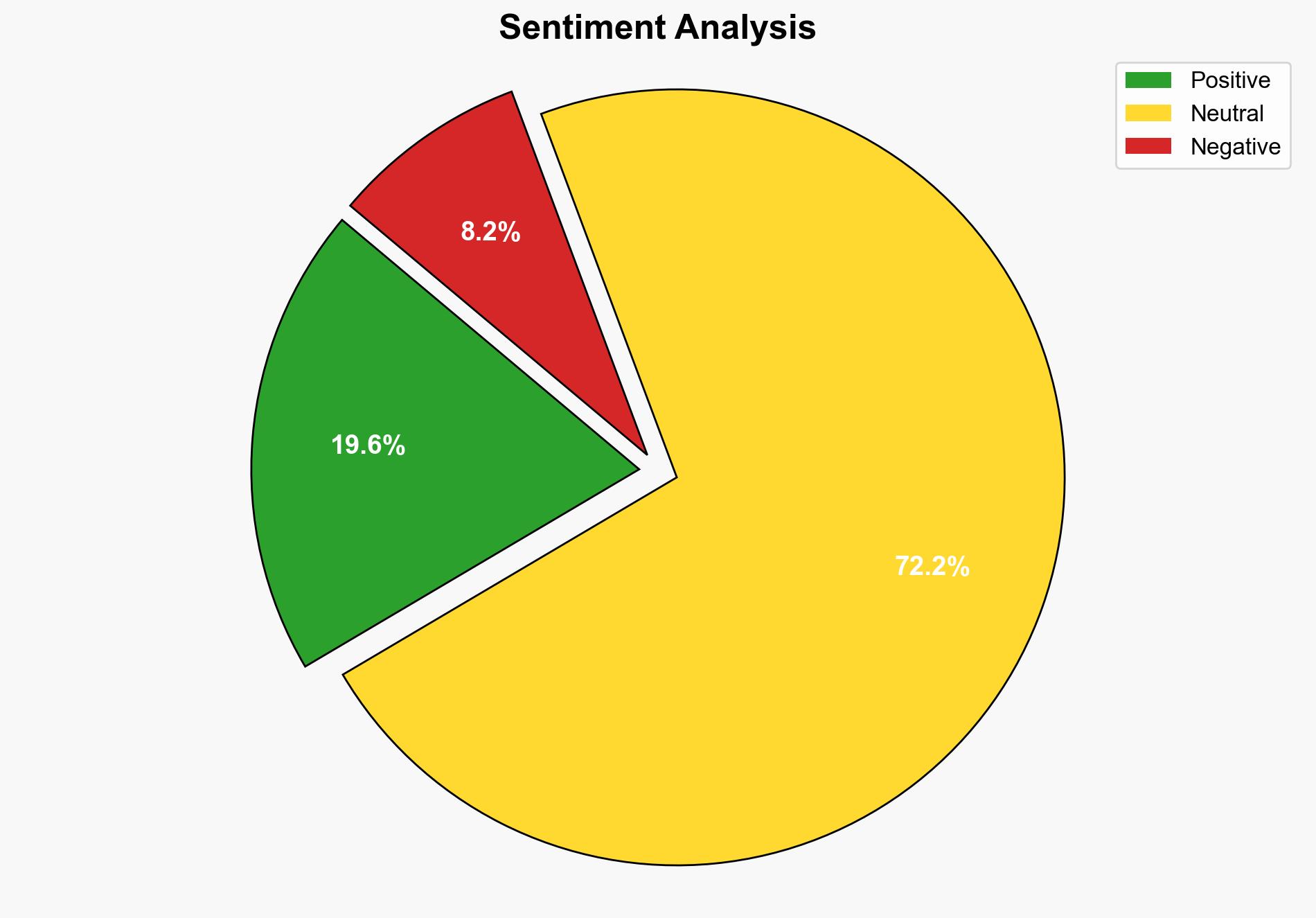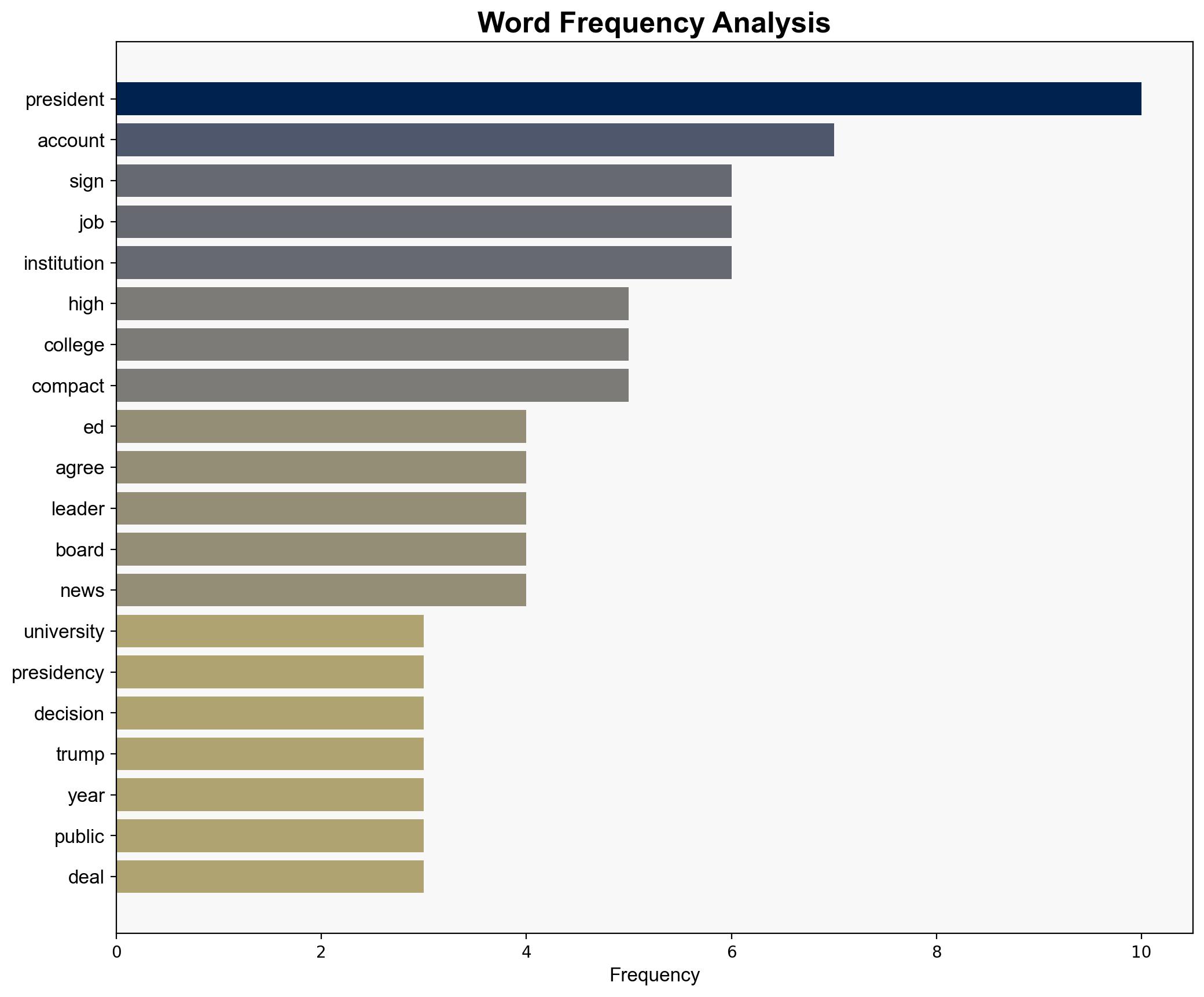The Compact Calls for a Unified F You – Inside Higher Ed
Published on: 2025-10-16
Intelligence Report: The Compact Calls for a Unified F You – Inside Higher Ed
1. BLUF (Bottom Line Up Front)
The strategic judgment indicates that the proposed compact by the Trump administration, which requires higher education institutions to freeze tuition and commit to viewpoint diversity, poses a significant threat to institutional autonomy and academic freedom. The most supported hypothesis suggests that the compact is a strategic maneuver to exert control over higher education institutions, potentially undermining their independence. Confidence level: Moderate. Recommended action: Higher education institutions should collectively resist the compact to preserve autonomy and academic freedom.
2. Competing Hypotheses
Hypothesis 1: The compact is primarily a political tool designed to exert control over higher education institutions, aligning them with specific political agendas by leveraging federal funding as a bargaining chip.
Hypothesis 2: The compact is a genuine attempt to address financial sustainability and promote diversity of thought within higher education, aiming to create a more balanced and financially stable academic environment.
3. Key Assumptions and Red Flags
Assumptions:
– Hypothesis 1 assumes that the compact’s primary goal is political control rather than educational reform.
– Hypothesis 2 assumes that the compact’s measures will lead to positive outcomes in financial sustainability and diversity.
Red Flags:
– Lack of clarity on how viewpoint diversity will be measured and enforced.
– Potential bias in assuming that all institutions will comply without resistance.
– Absence of detailed financial analysis supporting the compact’s economic claims.
4. Implications and Strategic Risks
The compact could lead to a significant shift in the governance of higher education, potentially eroding institutional autonomy. This may result in increased political influence over academic content and operations. The risk of non-compliance includes loss of federal funding, which could financially destabilize institutions. Conversely, compliance may lead to internal resistance and loss of academic credibility. The compact could also set a precedent for further governmental intervention in higher education.
5. Recommendations and Outlook
- Higher education institutions should form a coalition to collectively negotiate terms that preserve autonomy while addressing legitimate concerns about financial sustainability and diversity.
- Conduct a comprehensive impact assessment to evaluate the potential financial and operational consequences of the compact.
- Scenario-based projections:
- Best Case: Institutions successfully negotiate terms that enhance financial stability without compromising autonomy.
- Worst Case: Widespread compliance leads to significant loss of academic freedom and increased political interference.
- Most Likely: A mixed response with some institutions resisting and others complying, leading to a fragmented higher education landscape.
6. Key Individuals and Entities
– Donald Trump (former President)
– Pete Hegseth (Defense Secretary)
– Candy Applere (President of a public institution)
– Iowa Board of Regents
7. Thematic Tags
national security threats, cybersecurity, counter-terrorism, regional focus





